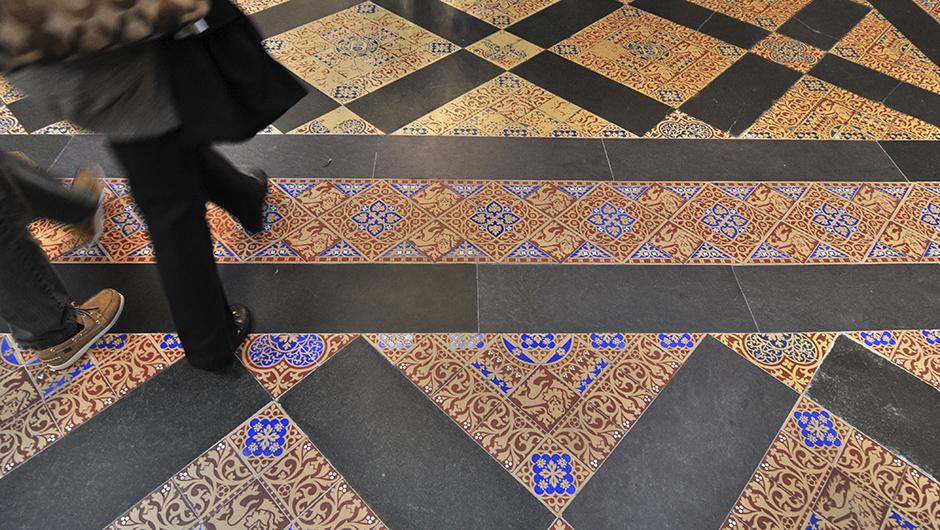Historic Furniture and Decorative Arts Collection
Parliament's collection of 11,000 items of historic furniture, clocks, ceramics and silver are of international significance. Nearly two thirds of the collection was designed by Augustus Pugin, who created the original interior of the building. Much of the rest was designed by Giles Gilbert Scott when he was asked to rebuild and furnish the bombed areas of the House of Commons after the Second World War.
There are many unique objects in the collection such as the Monarch’s Throne in the Lords Chamber and House of Lords Clerk’s Table. A conference table designed by Gilbert Scott for the Prime Minister’s study in 1950 has a ribbon of triangles of 259 different types of wood around its edge, each donated by a member of the Commonwealth at that time. Other items, such as a table in the Speaker’s House, are important because they pre-date the fire which destroyed much of the medieval Palace of Westminster in 1834.
Parliamentary Art Collection
The Parliamentary Art Collection is the national collection documenting the history, work and people of Parliament and it comprises over 9,000 objects, such as sculpture, wall paintings, oil paintings and works on paper and textiles. Among the most famous pictures are the monumental water-glass paintings by Daniel Maclise in the Royal Gallery commemorating the Battle of Waterloo and the Death of Nelson at the Battle of Trafalgar.
As well as curating Victorian works of art, Parliament also commissions contemporary work. Above the entrance to St Stephen’s Hall is New Dawn by Mary Branson (2018), a site-specific contemporary glass and light installation, which was the first abstract contemporary artwork to be installed in the historic Palace. New Dawn commemorates the long campaign that led to some women gaining the vote in 1918, and all women in 1928.



